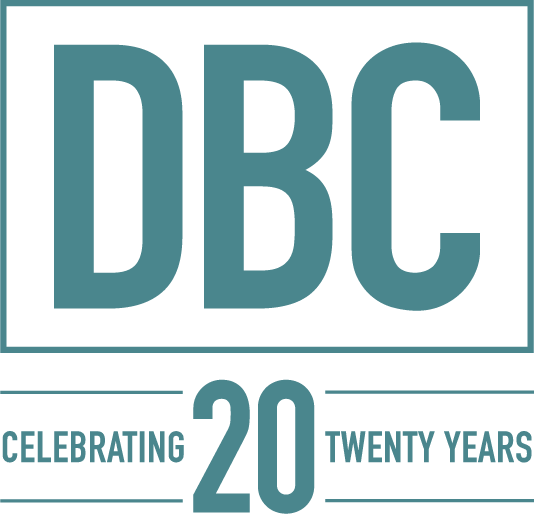2025 will be a year of transformational change for the television industry. In this special series, DBC Brand Communications and Jon Lafayette, former Business Editor at Broadcasting & Cable, look at what lies ahead for Broadcast Linear TV, Cable TV, Streaming and CTV. Here, a look at The Future of Cross-Platform Measurement, Part 2.
Cross-platform measurement has proved to be a surprisingly persistent problem for the advertising business, making it difficult to accurately plan modern video campaigns using both traditional TV and streaming. (Link to Part 1.)
At a minimum, the lack of cross-platform measurement results in the annoying level of frequency often complained about by viewers. It also makes it difficult for advertisers and their media buyers to allocate advertising dollars among competing channels and platforms.
So what do buyers want?
“In a perfect world, I’d have my publisher data for each of my KPI coming into our system, so we accredit every campaign for every client. I could validate that information against one source, not just for campaign management but for total audience measurement,” said Samantha Rose, executive VP at Horizon Media.
“If different platforms truly believe that what they offer from a media inventory standpoint is that their audiences are competitive and up to snuff, I don’t see any reason why you wouldn’t want to put your cards on the table, to say, ‘yeah, I’m the best, spend with me. I have no qualms about being evaluated,” said Henry Webster, senior VP of analytics and insights at media agency KSM.
How can this be done?. “The most important aspect of cross platform measurement is identity,” said Josh Chasin, the former Comscore and VideoAmp executive who is now a principal at KnotSimpler.
“You have to have some framework that represents every household of every person and then project viewing to those with the same identity. That’s the only way you can do it nowadays,” Chasin said.
The task becomes exponentially more difficult as advertisers target more specific audiences, rather than broad demographics.
Individual agencies, publishers and research companies have their own spines, but each has become their own walled garden. Those identities need to be interoperable and comparable within using clean rooms technology to protect proprietary data and personal information about consumers, Chasin said.
A number of groups and companies are attempting to solve the cross-platform conundrum.
The Association of National Advertisers says its Aquila initiative has been making progress. Last month it announced that Kantar Media has successfully launched a single-source calibration panel that has been installed in more than 1,000 homes nationwide. It plans to expand that to more than 5,000 homes. Accenture, which is also working with Aquila, is developing technology that will integrate with leading ad platforms, providing advertisers and agencies with a secure and seamless way to access their brand campaigns’ deduplicated reach and frequency.
“By supporting Aquila, we can collectively drive forward solutions that benefit not only our brands but also the entire advertising ecosystem, creating a more efficient, transparent, and consumer-first marketplace,” said Shenan Reed, chief media officer, global marketing at General Motors, in a statement.
Other measurement outfits are also tackling cross platform measurement.
Analytics and technology company datafuelX last month announced it was granted a patent for the technology behind its dynamic reach and frequency tool, precisionX, which enables the convergence of channels including linear, addressable and streaming TV.
“With precisionX, we can enable publishers to deliver an integrated cross-platform campaign, delivering true cross-platform reach and frequency, and more targeted, effective campaigns with far less waste,” said Howard Shimmel, head of strategy and board member at datafuelX.
Of course there are other ways to measure campaigns. Recently there has been a focus on outcome measurement and attribution, which go past exposure to determine which ads led to desired results, such as store traffic, web site visits and ultimately sales.
“Outcomes is a better way to think about how we plan our advertising dollars. Reach and frequency isn’t as critical of a planning metric as it once was. It’s important from a campaign management standpoint so that you’re not over addressing certain audiences, that you’re maximizing reach when you can,” said KSM’s Webster. “But in terms of the end-all, be-all of what a plan looks like and the linchpin of a good plan, reach-frequency was that at one point in time, and it’s not today.”
Ultimately it’s up to the industry to decide which data are crucial to making sure advertising dollars are well spent.
Shimmel recalls that a few years ago, it was discovered that because connected TV devices didn’t register when viewers switched from streaming to traditional TV, as much as 20% of CTV commercials weren’t being seen by human consumers. Despite the scale of the wasted ad dollars, the industry just shrugged its shoulders.
The point is that cross-platform measurement is more than just counting impressions, it must include other qualifiers like the MRC Cross-Media Measurement standards.
“There is still a question in the industry about whether there interest is in buying unduplicated reach instead of Impressions in linear and streaming from publishers like Televisa Univision,” said Shimmel. “I think unduplicated reach is the future the industry should be pointed to. There are lots of research studies that highlight how maximizing reach aligns with successful brand campaigns. But how the data and analytic tools needed get funded needs to be addressed.”

Jon is the former business editor of Broadcasting+Cable since 2010. Before B+C, Jon covered the industry for TVWeek, Cable World, Electronic Media, Advertising Age and The New York Post. A native New Yorker, Jon is hiding in plain sight in the suburbs of Chicago.

